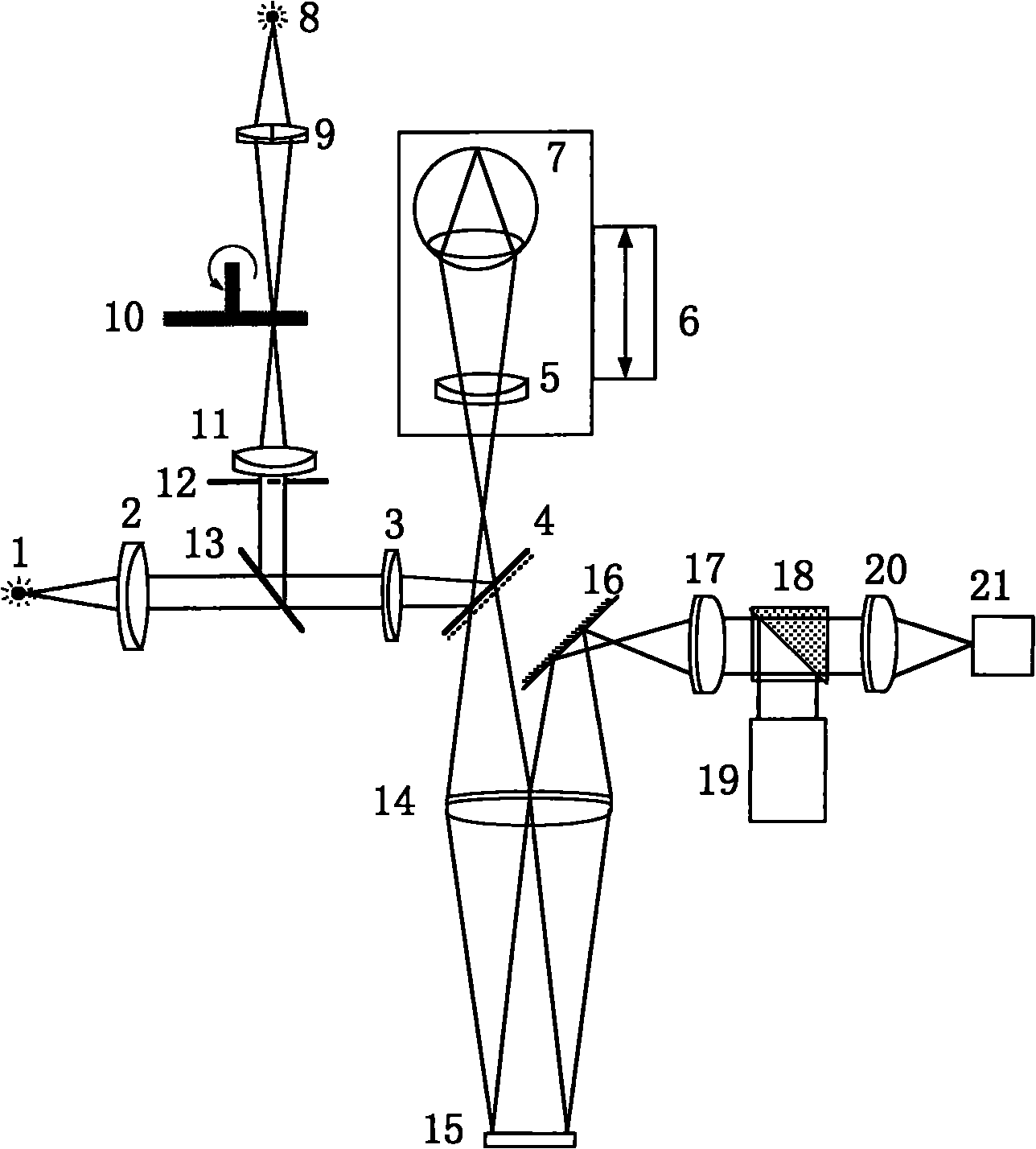Liquid crystal adaptive aberration correction retinal imaging device with high-efficiency utilization of energy
A liquid crystal self-adaption and aberration correction technology, which is applied in applications, eye testing equipment, medical science, etc., can solve problems such as large energy loss, achieve the effects of increasing universality, reducing costs, and solving sensitivity limitations
- Summary
- Abstract
- Description
- Claims
- Application Information
AI Technical Summary
Problems solved by technology
Method used
Image
Examples
Embodiment Construction
[0017] 1) A light-emitting diode with a luminous wavelength λ' of 550 nm is used as the light source 1 for the visual mark.
[0018] 2) The illumination source 8 used is a small semiconductor laser with fiber coupling, the core diameter is 100 μm, the emission wavelength λ is 808 nm, and the output power is adjustable in the range of 10 mW to 20 mW.
[0019] 3) The beam splitter 4 used has a transmittance ratio of about 4 for the fundus illumination light with a wavelength of 808nm.
[0020] 4) The first lens 2, the second lens 3, the third lens 5, the fourth lens 9, the fifth lens 11, the sixth lens 14, the seventh lens 17, and the eighth lens 20 are double cemented achromatic lenses, and The surface is coated with anti-reflection coating. The calibers are: 20mm, 25mm, 25mm, 10mm, 20mm, 40mm, 20mm, 20mm; the focal lengths are: 50mm, 250mm, 200mm, 30mm, 50mm, 250mm, 86mm, 100mm.
[0021] 5) Select the human eye 7 as 800 degrees of myopia and 150 degrees of astigmatism, and i...
PUM
| Property | Measurement | Unit |
|---|---|---|
| Luminous wavelength | aaaaa | aaaaa |
| Diameter | aaaaa | aaaaa |
| Thickness | aaaaa | aaaaa |
Abstract
Description
Claims
Application Information
 Login to View More
Login to View More - R&D
- Intellectual Property
- Life Sciences
- Materials
- Tech Scout
- Unparalleled Data Quality
- Higher Quality Content
- 60% Fewer Hallucinations
Browse by: Latest US Patents, China's latest patents, Technical Efficacy Thesaurus, Application Domain, Technology Topic, Popular Technical Reports.
© 2025 PatSnap. All rights reserved.Legal|Privacy policy|Modern Slavery Act Transparency Statement|Sitemap|About US| Contact US: help@patsnap.com



